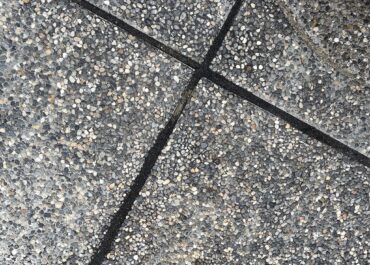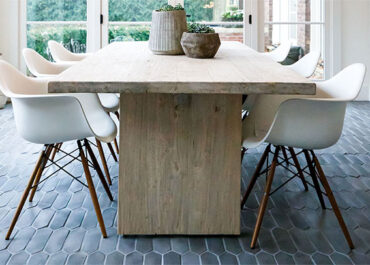
A paver walkway offers the simple luxury of a durable, elegant surface to enhance your curb appeal and outdoor functionality. It’s a popular investment throughout the U.S. due to the many benefits it provides over time, even outliving the house itself when taken care of. When it comes to hardscape materials, there are many options available on the market – each offering its upsides and opening up a world of design possibilities.
In this complete guide, learn all the intricacies behind a paver walkway installation, from the choice of paving stones to the maintenance routine required.
Don’t miss: Interlocking concrete pavers – What you should know
What is a paver walkway?
A paver walkway is a pathway made using paving stones, which are often interlocking bricks commonly used in landscaping and construction. These walkways can be found in gardens, yards, parks, and various outdoor spaces – being designed to provide a stable, visually appealing path for walking, coming in various shapes, sizes, colors, and patterns, and allowing for a lot of creativity in their design and layout. As you’ll see in a bit, paver walkways are popular because they’re durable, relatively easy to install, and can enhance the aesthetic appeal of outdoor areas.
Essentially, paver walkways can be employed anywhere there’s a need for a durable, aesthetically pleasing pathway. They offer flexibility in design and are adaptable to various environments and landscaping styles, including:
- Residential gardens and yards, connecting different areas of the yard or leading to specific features like a patio, pool area, or gazebo;
- Parks and public spaces, providing visitors with designated routes while adding aesthetic value to the landscape;
- Commercial landscapes such as shopping malls, office complexes, and campuses, thus creating pedestrian pathways and enhancing the overall look of the area.
- Outdoor patios, connecting different sections of the space or leading to other parts of the garden or property.
What are the best pavers for a walkway?
The choice of the best pavers for a walkway often depends on various factors including the intended aesthetic, durability, climate, and budget. Here’s a breakdown of some commonly used pavers for walkways:
Brick pavers
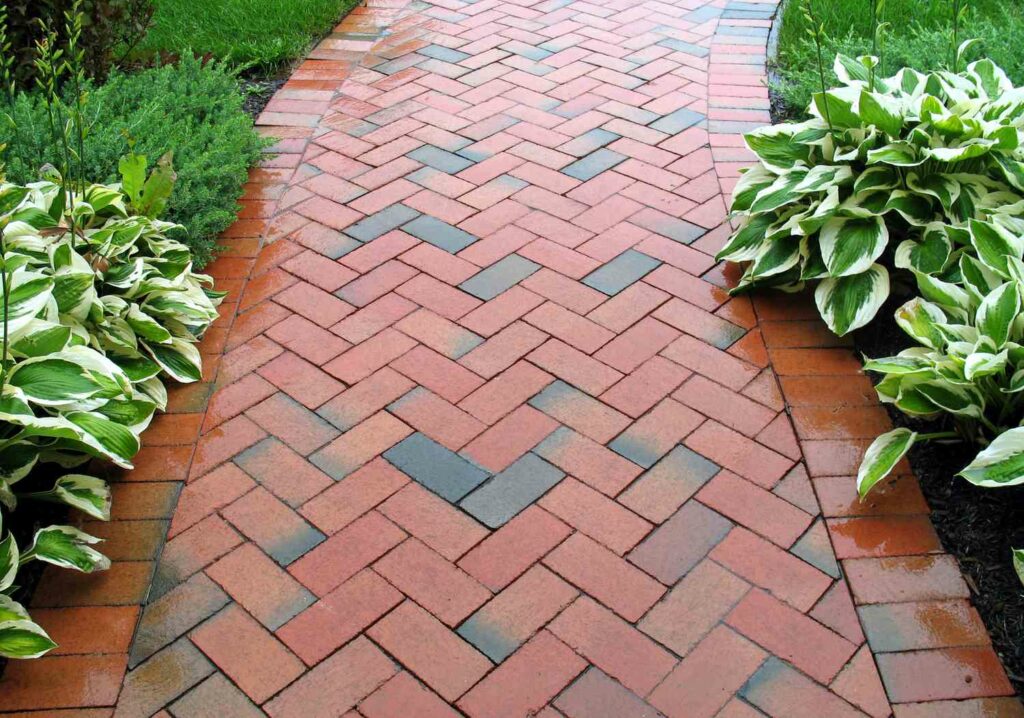
These are classic and versatile. They offer a traditional, rustic look and come in various colors and sizes. They’re durable and relatively easy to replace if needed.
Learn all about brick pavers by clicking here.
Concrete pavers

Available in a wide range of shapes, colors, and textures, concrete pavers are durable and cost-effective. They can mimic the appearance of natural stone or bricks.
Learn all about concrete pavers by clicking here.
Porcelain pavers
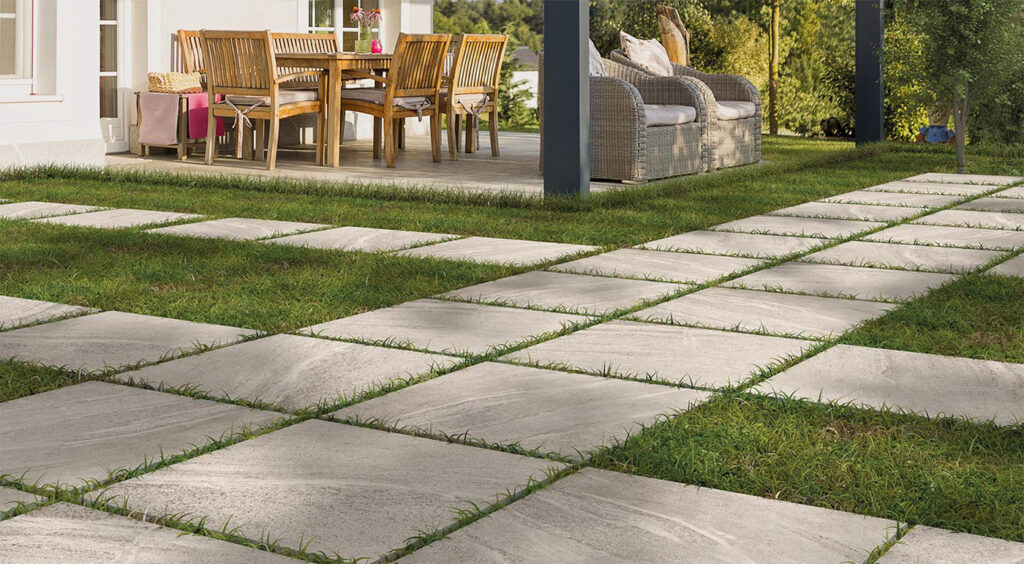
Known for their strength, low porosity, and resistance to stains, these pavers are available in a variety of styles, colors, and textures. They’re suitable for both indoor and outdoor use.
Learn all about porcelain pavers by clicking here.
Travertine pavers
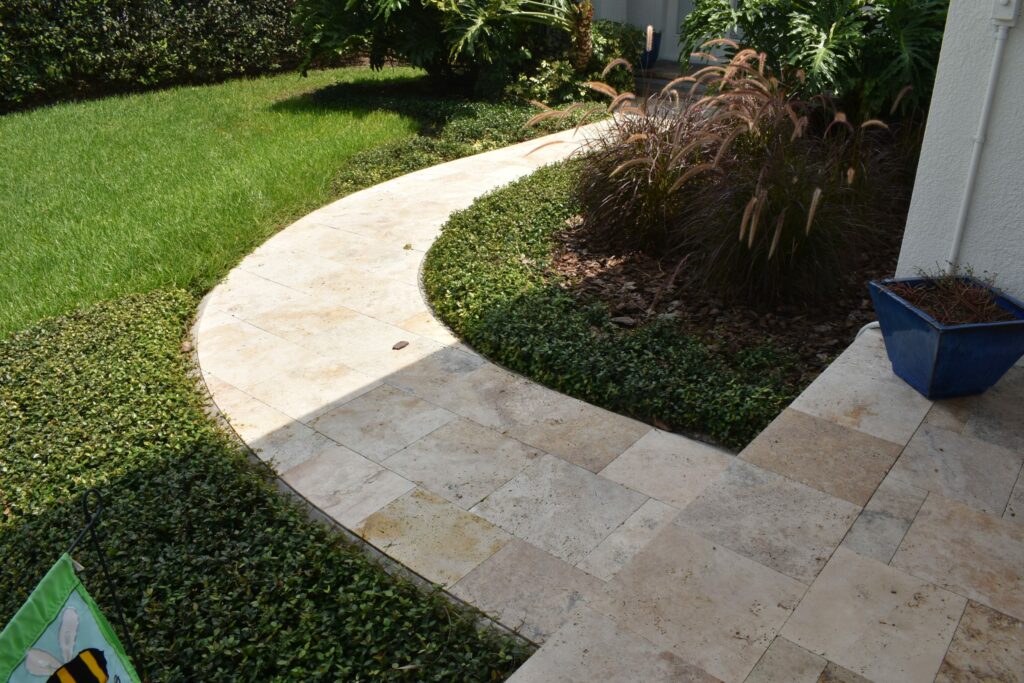
If you want a natural stone with a unique and rustic appearance, travertine is for you. It’s known for its durability and ability to stay cool even in hot weather, hence its high demand for poolside applications. It’s available in various earthy tones.
Learn all about travertine pavers by clicking here.
Ultimately, the best choice among the aforementioned options depends on what appeals to you aesthetically, the climate of your area, the level of maintenance you’re willing to undertake, and your budget. For instance, in areas with extreme weather, durability might be more critical – while in areas with a focus on aesthetics, appearance might take precedence. Consulting with a landscaping professional can help you determine the best paver type for your specific needs and environment, especially when we consider the fact the products available go beyond the four main options we mentioned here (limestone and marble tiles are contenders, too).
How to install a paver walkway
Installing a paver walkway is a manageable DIY project if you have some basic skills and the right tools. That said, if you’re unsure or if the project is large and complex, consulting with a professional or seeking assistance is always the best idea.
Here’s a general guide to help you get started:
Materials and tools
- Pavers of your choice
- Sand or gravel base
- Landscape fabric
- Edging material (optional)
- Crushed stone or gravel
- Wooden stakes
- String
- Level
- Tamper
- Rubber mallet
- Shovel
- Wheelbarrow
- Plate compactor (optional but recommended for larger projects)
Plan the walkway
- Determine the layout and design of your walkway.
- Mark the borders using wooden stakes and string.
Excavate the area
- Dig out the area for your walkway to a depth of about 6-8 inches. This allows for a 4-inch base of gravel or sand and the thickness of the pavers.
Prepare the base
- Fill the excavated area with a base material like crushed stone or gravel. Compact the base using a tamper or plate compactor.
Add a layer of sand
- Spread a layer of sand (about 1 inch thick) over the compacted base. Level the sand using a screed or a longboard.
Lay the pavers
- Start laying the pavers according to your planned design. Use the string and level to ensure a straight and even surface.
Cutting pavers (if necessary)
- If you need to fit pavers into specific areas, use a saw or chisel to cut them to size.
Compact the pavers
- Once all the pavers are laid, use a plate compactor to settle them into the sand, creating a stable surface.
Fill the joints
- Sweep polymeric sand into the joints between the pavers. This helps lock them in place and prevents weed growth.
Compact the polymeric sand
- Lightly wet it and then compact the pavers again. This helps activate the binding agents in the sand.
Clean up
- Finally, sweep away any excess sand on the surface of the pavers.
Further tips
- Follow any specific guidelines provided by the manufacturer of your chosen pavers;
- Take your time with the preparation, ensuring a well-compacted and level base;
- Check for levelness frequently during the installation process;
- Consider wearing safety gear, especially when cutting pavers.
Maintenance requirements
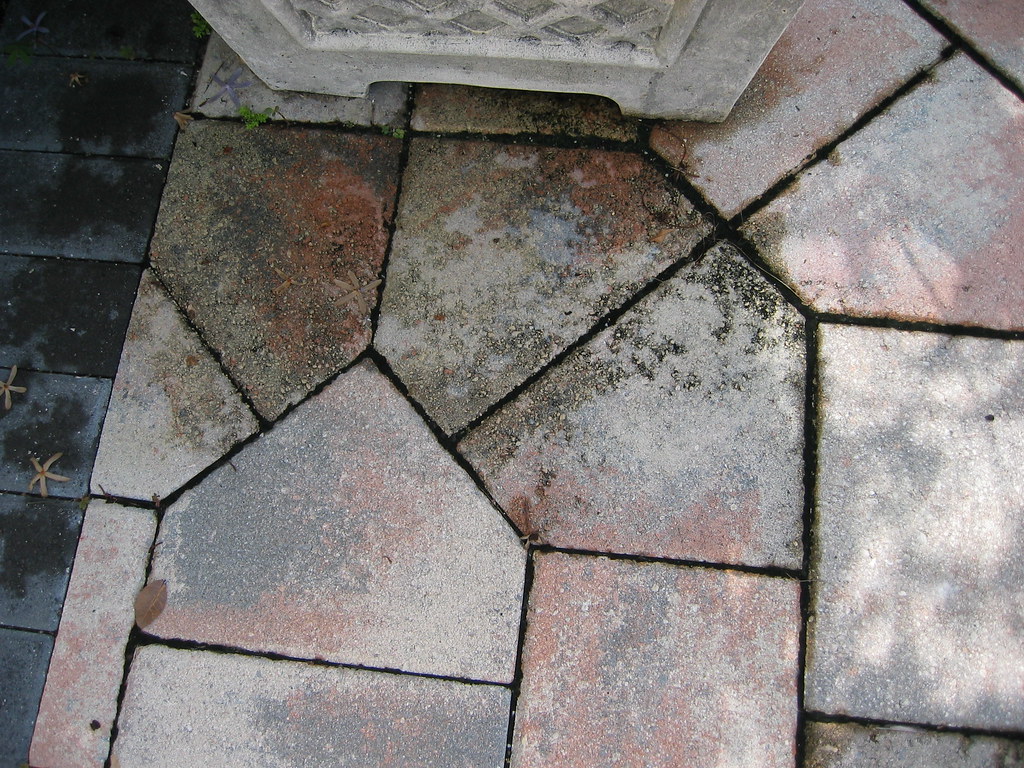
There’s no reason to invest in something that should last if you don’t undertake the necessary measures to make it last in the first place – so maintenance plays a pivotal role in the process of embellishing your home. Maintaining a paver walkway is generally straightforward, but regular care can significantly prolong its lifespan and keep it looking good.
Here are some maintenance guidance for you:
- Regular cleaning: Sweep the walkway regularly to remove debris, leaves, and dirt. Occasional rinsing with a hose or pressure washer (gently) can help prevent the buildup of grime between pavers.
- Weed control: Keep an eye out for weeds growing between the pavers. Pull them out as soon as they appear to prevent them from taking root and causing damage.
- Sealing: Consider applying a sealer to the pavers – but only if they’re porous, like concrete and brick. Sealants can help protect against stains and make cleaning easier, and from a professional standpoint, you should reapply it at least once a year for full efficiency.
- Stain removal: Deal with stains promptly, given that oil, grease, or organic stains can occur. Use appropriate cleaners or poultices designed for the type of stain and paver material to remove them.
- Repairing and re-leveling: Check for any loose or sunken pavers, re-leveling or replacing them as necessary. Addressing these issues promptly prevents more significant problems from developing.
- Snow and ice removal: Avoid using harsh chemicals on pavers as they can damage the surface. Opt for de-icing products safe for use on pavers or use sand for traction instead.
- Regular inspections: Periodically inspect the walkway for any signs of damage or shifting. Early detection allows for timely repairs.
Eagle Pavers is ready to make your dream paver walkway come true
As a branch of Eagle Stones, our team specializes in paver supply and installation around the county of Sarasota and Manatee, Florida. In case you’re near us, don’t hesitate to give us a call so we can get started on your project with a free estimate!
Click here to view the full online catalog – we’ll be waiting for you to reach out and get the perfect pavers for your walkway, regardless of the material chosen.


